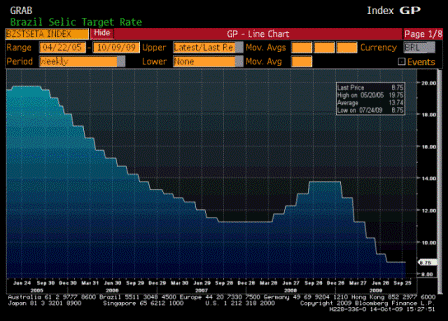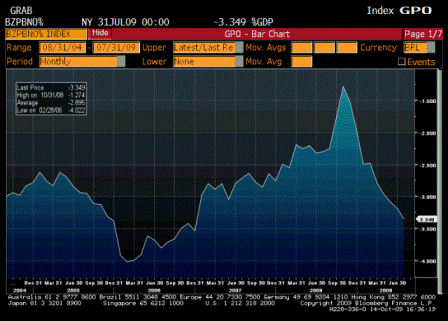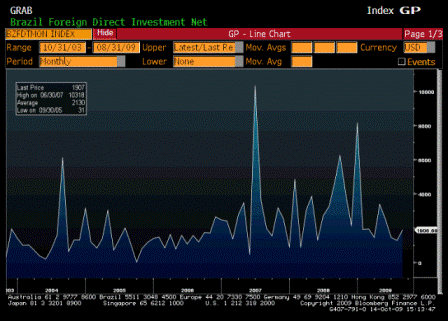[Skip to the end]
Check out the last ‘house hunting’ story.
Looks like they are on to that angle of attack, directing
that form of ‘investment’ as a matter of public purpose,
much like we have done with our public policies over the years.
Also looks like the cut back in lending was to try to moderate
what they deemed to be ‘overheating’ and should only be temporary.
Seems the rate hike was only 26 basis points (not that rates matter very much in any case).
Very interesting note here:
Chinese banks usually “frontload” lending in the first half of each year.
August 18 (Bloomberg) — China’s money-market rates dropped after the central bank stopped driving up the benchmark bill yield for the first time in six weeks, fanning speculation it will ease availability of funds to stem a slump in stocks.
The People’s Bank of China said it sold 45 billion yuan
($6.6 billion) of one-year bills at a yield of 1.7605 percent, unchanged from last week’s auction. The central bank has let the yield rise 26 basis points since resuming sales of one-year bills on July 9, following an eight-month suspension.
“The authorities may want to ease the market panic after a big slump in stocks,†said Zhang Lei, a fixed-income analyst at Shenyin Wanguo Research & Consulting Co. in Shanghai. “The unchanged yield is a signal that the central bank will stick to its loose monetary policy.â€
The seven-day repurchase rate, which measures funding availability on the interbank market, declined 12 basis points, or 0.12 percentage point, to 1.30 percent as of 5:30 p.m. in Shanghai, according to the China Interbank Funding Center. A basis point is 0.01 percentage point.
A government report showed on Aug. 11 that industrial production gained 10.8 percent in July, less than the 12 percent median estimate in a Bloomberg survey of economists. Urban fixed-asset investment for the seven months to July 31 climbed
32.9 percent, which was also short of analyst forecasts.
China’s Investment-Grade Debt Ratings Affirmed by S&P
Aug. 18 (Bloomberg) — China’s investment grade credit rating was affirmed by Standard & Poor’s Ratings Services, which cited the country’s “exceptional†economic growth potential.
S&P maintained China’s A+ long-term sovereign credit rating and its A-1+ short-term rating, according to a statement issued today. The outlook on the long-term credit rating remains stable, S&P said.
“Fiscal flexibility remains significant,†S&P said in the statement. “The Chinese government faces moderate risks of balance sheet damage if there is a steeper and more prolonged economic slowdown than currently expected.â€
August 17 (China Daily) — China’s new lending in July fell to less than a quarter of June’s level, as banks sought to limit credit risks and the flow of money into stocks and property.
Banks extended 355.9 billion yuan in loans, down from 1.53 trillion yuan in June, the People’s Bank of China reported on its website last week. M2, the broadest measure of money supply, rose 28.4 percent.
China Construction Bank Corp, the nation’s second-largest lender, said recently that it will cut new lending by about 70 percent in the second half to avert a surge in bad debt.
The government wants to avert bubbles in stocks and property without choking off the recovery of the world’s third-biggest economy.
A smaller loan number “is probably a good thing – we’re coming off this ridiculously high level of lending in the first half,” said Paul Cavey, an economist with Macquarie Securities in Hong Kong.
Premier Wen Jiabao reiterated in a statement on Aug 9 that a “moderately loose” monetary policy and “proactive” fiscal policy will remain unchanged because the economy faces problems including sliding export demand and industrial overcapacity.
UBS AG stated in a July 31 note that the scale of China’s new lending in the first half was “neither sustainable nor necessary.” New loans of 300 billion yuan to 400 billion yuan a month in the second half would be “more than enough” to support the nation’s recovery, the report said.
Chinese banks usually “frontload” lending in the first half of each year.
The credit boom and a 4 trillion yuan stimulus package drove 7.9 percent economic growth in the second quarter from a year earlier and helped General Motors Co to report a 78 percent increase in vehicle sales in China in July.
A record $1 trillion yuan in loans through June has also helped to drive this year’s 79 percent gain in the Shanghai Composite Index.
Central bank and finance ministry officials said on Aug 7 that they will scrutinize gains in stock prices without capping new lending. The Financial Times reported the same day that the central bank had told the largest state-controlled lenders to slow growth in new loans, citing unidentified people familiar with the matter.
Credit exploded after the People’s Bank of China scrapped quotas limiting lending in November and told banks to back Wen’s 4 trillion yuan stimulus package.
Zhang Jianguo, the president of China Construction Bank, expressed concern about loan growth last week, saying some industries are growing too rapidly and some money isn’t flowing into the real economy.
Housing prices “are rising too fast and housing sales are growing too fast”, Zhang said.
Property sales climbed 60 percent in value in the first seven months from a year earlier, the statistics bureau said.
China’s banking regulator urged lenders on July 27 to ensure credit for investment projects flows into the real economy.
Three days later, the regulator announced plans to tighten rules on working capital loans.
Stephen Roach, chairman of Morgan Stanley Asia, said on July 29 that surging lending and infrastructure spending worsened imbalances in the Chinese economy and “could sow the seeds for a new wave of non-performing bank loans”.
Instead of pumping up growth, the government should do more to boost private consumption, he said.
August 18 (Reuters) — The Chinese government is attempting to pass the baton of growth from State-funded infrastructure investment to the private housing sector, a risky but necessary move to sustain the economic recovery.
Construction cranes sprouting in big cities, busy furniture shops and soaring property sales all show that the transition is going smoothly so far, though officials are wary that house prices may rise too high, too quickly.
China’s biggest listed property developer, Vanke, lifted its housing starts target for this year by 45 percent, while its rival Poly Real Estate said sales in Jan-July rose 143 percent from a year earlier.
On the ground, construction firms, big and small, are trying to meet the demand, last years’ downturn now a distant memory.
“It’s been a long time since we’ve had a day off. Several months, I think, though I can’t remember exactly,” said Zhang Minghui, owner of a small building company in Beijing.
“From late last year to early this year, we basically had nothing to do. Everybody was careful with their money because of the crisis and so projects got delayed.”
Zhang cut his staff to three in November but is now back up to a crew of 14.
The economic importance of the property sector in China is hard to overstate. Investment in residential housing accounted for about 10 percent of gross domestic product before a property boom turned to bust in 2008, roughly the same as the contribution from the country’s vaunted export factories.
The government’s first steps last year to revive the stalling Chinese economy were to offer tax cuts to encourage home purchases, followed by rules to ease access to mortgages.
These are bearing fruit.
With housing investment up an annual 11.6 percent in the first seven months, Chinese growth momentum is broadening out and the central government has been able to slow the pace of its stimulus spending on infrastructure.
Real economy
But Beijing must strike a fine balance in its bid to kick-start the housing market.
On the one hand, it wants rising prices to persuade house hunters to stop putting off purchases and to get developers to invest in new projects. On the other hand, it is wary of prices rising too quickly, luring speculators into the market and turning it into an asset bubble, not an economic driver.
“Because it is closely linked to so many industries, volatility in the real estate market will inevitably lead to macroeconomic volatility,” the government-run China Economic Times warned on Monday.
[top]




